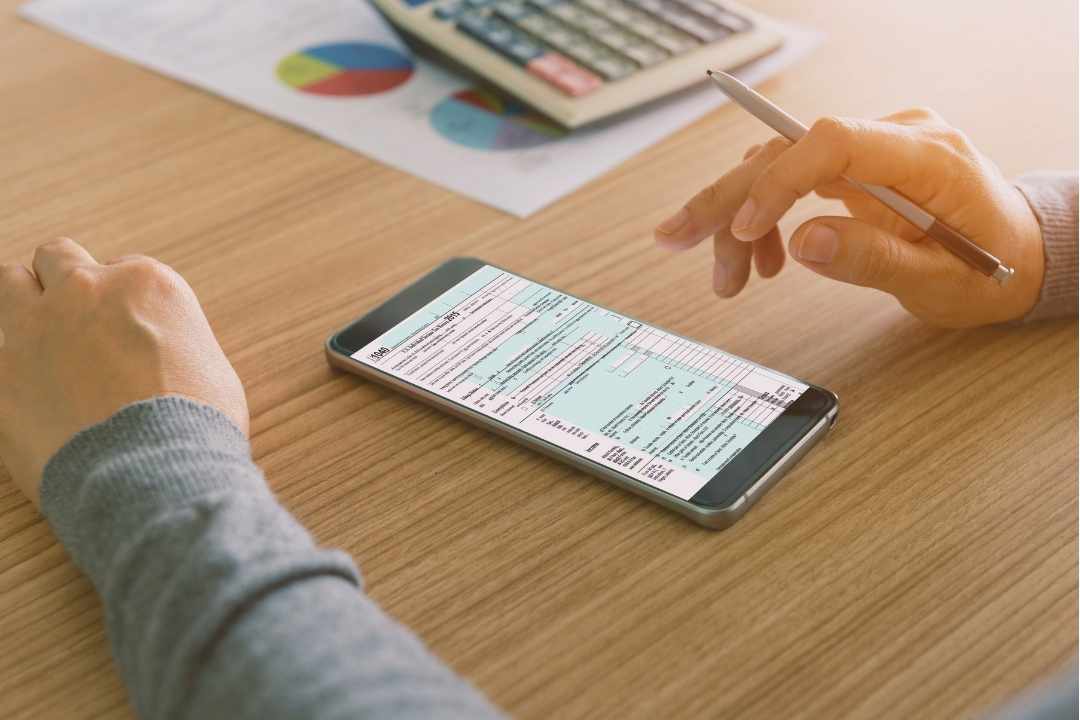When someone in India wants to send money abroad, the Income Tax (IT) Department wants to keep a tab on the money being sent. This is where Form 15CA and 15CB come in. Filing these forms are part of compliance when a person is sending money abroad. Form 15CA maintains an effective information processing system that the IT department can use to track foreign remittances and their tax liability. Banks and authorised dealers make sure that they receive this form before the remittance is made.
These forms may seem complex to a person handling foreign remittance for the first time. In this blog we will try to understand 15 CA/CB forms and their application process better.
What are Form 15CA and Form 15CB?
Form 15CA
15 CA form is essentially a self-declaration filed by individuals or entities making foreign remittances (i.e. sending money abroad) before sending the money abroad. It states that whatever money is being sent has been appropriately taxed.
Form 15CB
Form 15CB on the other hand, is a certificate issued by a Chartered Accountant (CA) registered under the Income Tax Act. This form certifies that tax deductions for a remittance is according to provisions of IT Act and Double Taxation Avoidance Agreement (DTAA). This is required when remittance amounts are chargeable to tax and the remittance/aggregate of such remittances exceed Rs. 5 lakhs in a financial year.
Types of Form 15CA and Their Relevance
Now that we have talked about Form 15 CA and CB in brief, let us get to the specific sections of Form 15 CA. There are four sections of Form 15 CA that are applicable under different contexts of remittance abroad. We shall discuss these parts of Form 15 CA in the table below.
Breakdown of Form 15CA Parts (A, B, C, D)
| | Part A | Part B | Part C | Part D |
| Purpose & When to fill? | Part A is used for small remittance (< 5 Lakhs rupees) where no tax certificate is required, and taxability is not a concern. | Part B is used when the remittance is taxable and exceeds 5 lakh rupees during the financial year, and the Assessing Officer (AO) has approved and issued a certificate u/s 195(2)/195(3)/ 197 | Part C is used when the remittance is over 5 Lakh rupees and a certificate in Form No. 15CB from a chartered accountant has been obtained. | Part D is used when remittance is not taxable |
Applicability and Exemptions of Form 15CA and Form 15CB
Now that we have a basic understanding of the two forms, 15CA and 15CB, let’s look at some of the salient aspects concerning their applicability and the various exceptions surrounding them.
Only Part D of Form 15CA is to be filed if the remittance is covered under a specified exemption list as per the RBI or the Income Tax Act (for instance, payments for imports, medical treatment abroad, or education fees). This is used when remittance is made to an NRI and is not chargeable to tax.
As mentioned earlier, remittances up to 5 Lakh Rupees are not chargeable to tax, and for such payments, only Part A of Form 15CA (basic details) needs to be submitted.
If the remittance is over 5 Lakh Rupees, such payments are subject to tax. These payments require Part C of Form 12CA (detailed remittance info) and Form 15CB.
However, if your remittance is over 5 Lakh rupees but you have already obtained a TDS certificate, only Form 15CA - Part B (with certificate details) is filed.
Documents Required to File Form 15CA
Before starting the filing process of these forms, it is essential to know about the documents and details required and to have them ready. Find below a checklist of these documents and details.
Documents Required for Fill Form 15 CA/CB
PAN Card : PAN Card of the sender is required in all the scenarios of filing the 15 CA form. PAN Card of the receiver is needed when the remittance is being sent to a relative abroad.
Bank Account Details: Bank account details including SWIFT/BIC code of both the sender and recipient is required while making the remittance.
Proof of Relationship: Documents such as a birth certificate, marriage certificate, or notarized affidavit are required to prove the relationship when remitting to a relative.
Purpose of Remittance: Declaration specifying the purpose of the remittance, such as education, medical expenses, investment, or payment for goods and service is required.
Form A2: Required for outward remittances under FEMA regulations.
Tax Residency Certificate: Required if the remittance is under a Double Taxation Avoidance Agreement (DTAA) for tax relief.
Form 10 F: Required if the remittance is under a DTAA for tax relief.
Declaration of Permanent Establishment: Important for determining taxability in cross-border transactions under DTAA. This is required in case the remittance is made for goods and services.
Details for Filling Part A:
Remitter details (payer in India)
Name
PAN
Remitter status
Residential status
Contact
Address details
Remittee details (receiver of payment)
Name
Contact
Address details
Remittance details
Amount
Bank details
Details for Filling Part B:
The details will be the same as the details required in Part A. In addition to this, it will require the Assessing Officer (AO) details like:
Details of the section
AO’s name
AO designation
Certificate date
Certificate number
Details for Filing Part C:
The details required are the same as the details required in Part A. In addition to this, you need to share the Chartered Accountant (CA) details like:
Name of the CA
Name of the proprietorship/firm
Registration number
Certificate date and number
Details for Filing Part D:
The details required are the same as the details required in Part A.
Step-by-Step Procedure to File Form 15CA & Form 15CB Online

It is important to know that you can fill and submit Form 15CA through both online (through e-Filing portal) & offline modes (through offline utility).
How to File Form 15CA Online
To file form 15CA - Part A/B/D
- Step 1: Log in to the e-Filing portal using your user ID and password.
- Step 2: On your Dashboard, click e-File -> Income Tax Forms -> File Income Tax Forms
- Step 3: On the File Income Tax Forms page, select the Form 15CA.
- Step 4: On the Instructions page, click “Let’s get started”
- Step 5: Upon clicking, Form 15CA will be displayed. Select the applicable section and fill in all the required details. Click Proceed
- Step 6: On the preview page, verify the details and click Proceed to e-verify
- Step 7: Click yes to submit
- Step 8: On clicking yes, you will be taken to the e-verify page.
After successful e-verification, you will receive a confirmation message on your email ID and mobile number registered with the portal.
To file form 15CA - Part C:
- Step 1: Choose Part C of the Form.
- Step 2: Select a CA to assign the Form.
- Step 3: Click Yes to submit the Form to CA after filling in the relevant details
- Step 4: Once the CA has submitted Form 15CB, you can either Accept or Reject Form 15CA and click submit.
- Step 5: After accepting the form, you will be taken to the e-Verify page. You can verify the Form using DSC or EVC
How to File Form 15CB Online (via a Chartered Accountant)

Form 15CB is a certification that requires a Chartered Accountant for verification of taxability requirements, the correct TDS deduction (if applicable), and verification of documentation. This is necessary to ensure the remitter classifies the payment accurately and avoids tax penalties.
The step-by-step procedure to file Form 15CB is as follows:
- Step 1: Log in to the e-filing portal with valid CA credentials
- Step 2: On your Dashboard, click e-file -> Income Tax Forms -> File Income Tax Forms
- Step 3: On the File Income Tax Forms page, select Form 15CB.
- Step 4: On the Form 15CB page, select the Submission Mode as Online, click the appropriate financial year and click continue.
- Step 5: On the Instructions page, click “Let’s get started”
- Step 6: Enter the PAN of the taxpayer who has assigned the form to CA and click Proceed
- Step 7: Fill in the required details and click preview
- Step 8: On the preview page, click Proceed to e-Verify.
- Step 9: Click Yes to submit
- Step 10: On the Unique Document Identification Number page, enter the Unique Document Identification Number.
- Step 11: On clicking proceed, you will be taken to the e-Verify page.
After successful e-verification, you will receive a confirmation message on your email ID and mobile number registered with the portal.
What is the Difference Between Form 15CA and Form 15CB?
The primary difference between Form 15CA and Form 15CB lies in the fact that Form 15CB mandatorily requires verification (and subsequent signature) from a Chartered Accountant. Other differences between these two forms involve the specific circumstances for which the forms are applicable. It is mandatory to file Form 15CA for every foreign remittance, while filing Form 15CB depends on the nature of the payment (such as if the taxable remittance value exceeds Rs 5 Lakhs).
Common Errors While Filing & How to Fix
Understandably, filing these forms can be a confusing process. Here are a few common mistakes encountered by individuals during this process, and ways in which you can avoid them.
Mistake 1: Mismatch in Remitter/Remittee Details
Avoid this by double-checking all details with official documents (PAN card, passport, or registration documents)
Mistake 2: Incorrect section selection in Form 15CA
Avoid this by referring to the remittance value and taxability to choose the correct part.
Mistake 3: Missing or Incorrect Form 15CB Upload
Avoid this by ensuring your CA files and digitally signs Form 15CB correctly before you file Part C of Form 15CA
Mistake 4: Wrong Nature of Remittance Code
Avoid this by referring to the RBI’s purpose codes or Annexure in the 15CA/CB instructions.
Key Takeaways on Form 15CA and 15CB Filing
The Forms 15CA and 15CB are important legal documents designed to ensure that foreign remittances are adequately taxed under the Income Tax Act. While they may seem complex and confusing to file at first, knowing about the correct procedure, prerequisites, and common mistakes can make this process easy. In this blog, we have outlined the ins and outs of these forms and discussed the various applications and exemptions surrounding them. By following this simplified guide, you will be able to tackle foreign remittances with ease and ensure that you are complying with all legal tax requirements.




